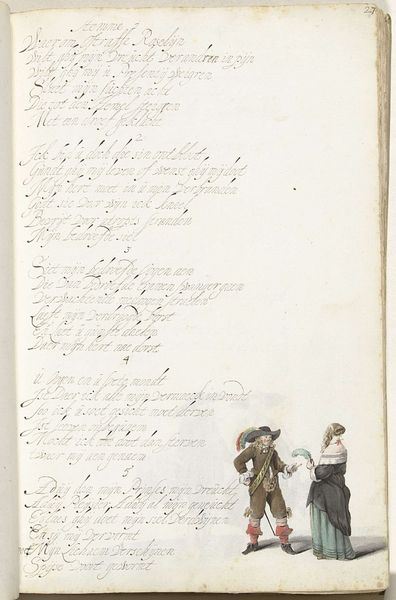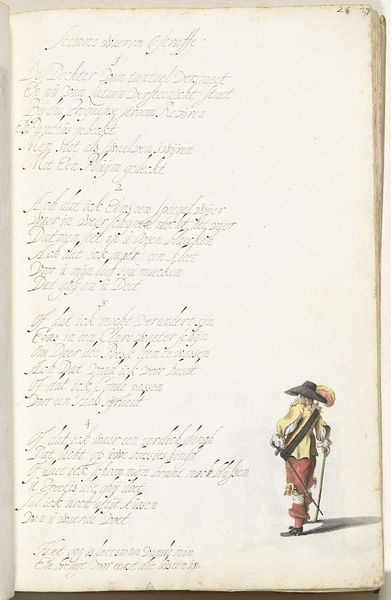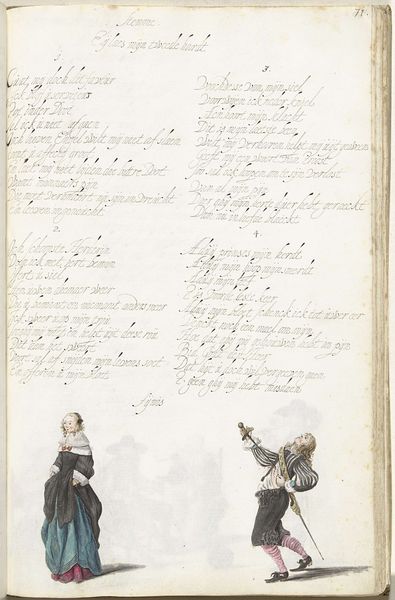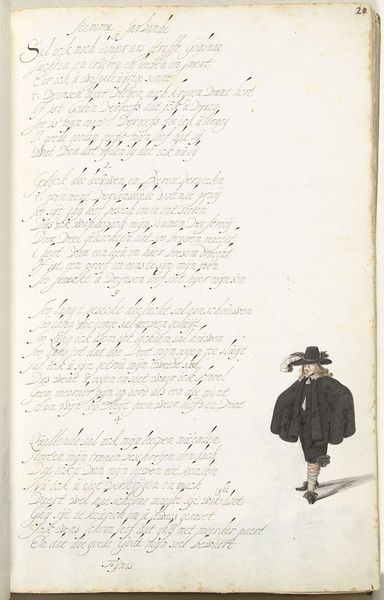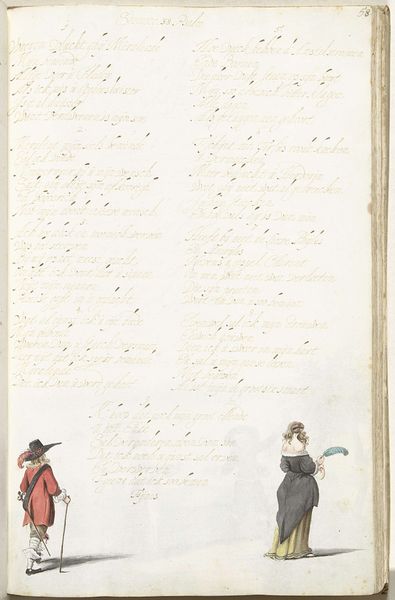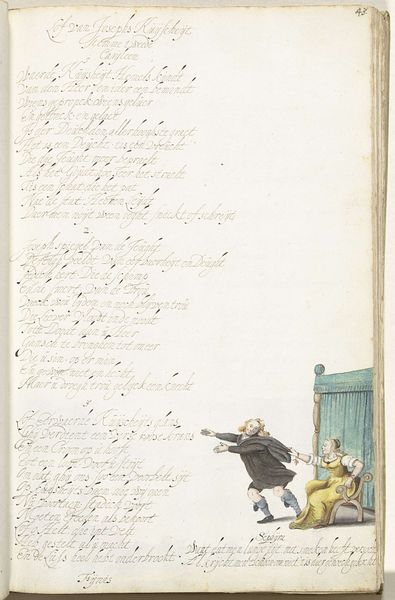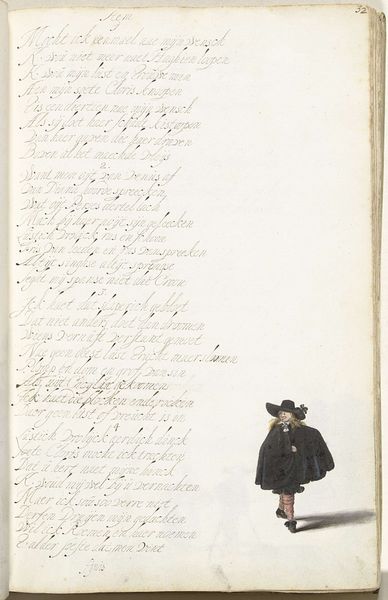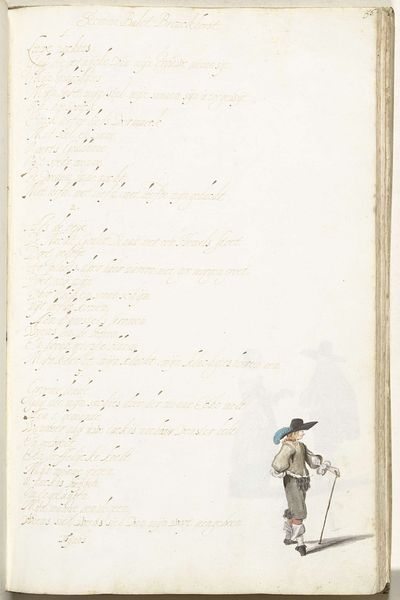
drawing, coloured-pencil, textile, paper
#
portrait
#
drawing
#
coloured-pencil
#
dutch-golden-age
#
textile
#
paper
#
coloured pencil
#
genre-painting
#
watercolor
Dimensions: height 313 mm, width 204 mm
Copyright: Rijks Museum: Open Domain
Curator: Looking at "Heer die een bal gooit en een dame," which translates to "Man throwing a ball and a Lady," by Gesina ter Borch, made circa 1652-1653, I’m struck by its unusual presentation. It's a drawing done with colored pencil on paper and is on display here at the Rijksmuseum. It seems part of a larger page, perhaps from a personal album. What's your immediate reaction to this piece? Editor: My first impression is whimsical, yet melancholy. The figures seem almost floating on the page among all this handwriting, slightly stiff like paper dolls. There's an air of amateur theatricals, something homemade. And that palette... so muted, giving a slightly faded, antique feel. Curator: Yes, the faded colors contribute to its intimate, almost fragile quality. Ter Borch wasn’t formally trained as an artist in the traditional sense; much of her artistic output was created within the context of her family, making works such as these, drawings and studies often bound into albums like a family diary or commonplace book. Editor: Ah, that explains the slightly awkward positioning of the figures, particularly the man throwing the ball – it has a folksy innocence. Is this genre painting representative of the time? Is it typical to include handwritten text? Curator: Yes, integrating text with imagery was quite common in the 17th century, especially within personal albums or books of emblems. Think of them almost like the proto-graphic novels, or even social media posts from the Dutch Golden Age. While on its surface it could be considered a genre scene depicting everyday life, there’s likely a deeper symbolic layer we’re missing without knowing the text that accompanies the images. And its setting – within a book rather than on a canvas - affects how this work likely would have been viewed. These were intimate objects that could and would be revisited for years, as opposed to publicly displayed art that’s designed to make a momentary impression. Editor: It feels quite personal. Like catching a glimpse of somebody’s private thoughts. It moves me to imagine Ter Borch meticulously rendering these scenes, embedding subtle meanings within a family circle. Knowing its original setting casts a tender light on what might seem at first glance an unassuming scene. Curator: Indeed. And the piece serves as a reminder that not all art of this period was grandiose or commissioned. Ter Borch found artistic expression in everyday subjects and imbued it with unique beauty. It prompts us to consider art not just as high culture, but as an essential form of personal storytelling. Editor: It definitely makes me wonder about the unseen stories held within those other pages... a window into a specific, shared lived experience.
Comments
No comments
Be the first to comment and join the conversation on the ultimate creative platform.
